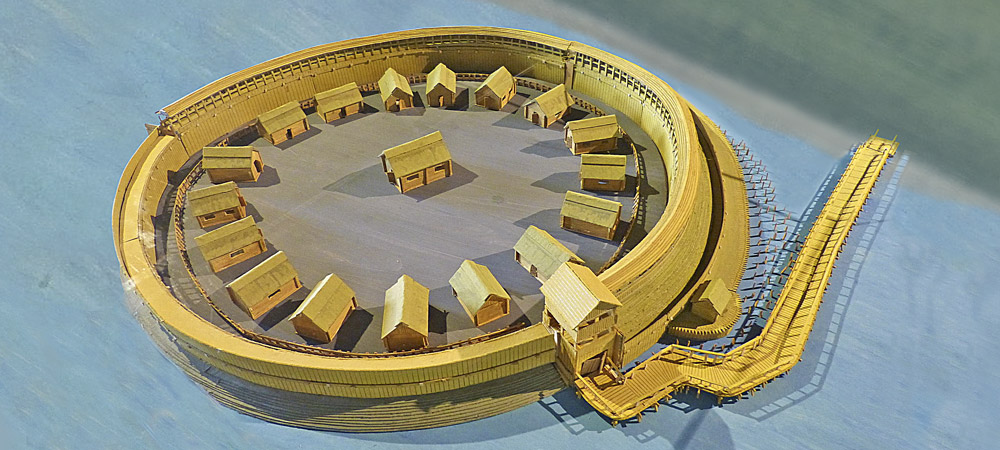Distinctive Design Forts

The location of Tornow forts in Germany and Poland 07
Another means of identification of the Tornow Culture in addition to pottery is the presence of archaeological evidence of forts of a distinctive design. Tornow Forts have a recognizable circular design. They were not used to live in but rather provided a fortified refuge when under attack. Some were also used to store grain.
The Groß Raden Archaeological Open Air Museum (German: Archäologische Freilichtmuseum Groß Raden) lies a few kilometres north of the small town of Sternberg and about a kilometre northeast of the village of Groß Raden in the German state of Mecklenburg-Vorpommern. The site is in a depression that borders directly onto the lake of Radener See. On a peninsula in front of that lies its circular castle rampart, visible from afar, which has a diameter of 50 metres. From 1973 to 1980 extensive excavations were carried out here, led by Ewald Schuldt, during the course of which the remnants of a Slavic settlement dating to the 9th and 10th centuries was unearthed. The fort has been reconstructed based on the excavations and established as an archaeological open-air museum. It has been enhanced by finds from the Slavic castle of Behren-Lübchin.08
Vital elements of the Tornow Sphere of Authority was a network of similar in size and heavily fortified strongholds. A typical Tornow-type fort area was 3/4 to 1 acre. The construction, size, and content of the Tornow forts suggest that they represent military outposts that are characterized by small interior and massive walls sometime surrounded by moat, and a significant presence of weaponry. Their similar sizes and constructions also suggest compatible labor investment by a unit of a certain number of people [soldiers?], who built a fort in a relatively short-time period. Very homogenous dating materials suggest that was the time frame. The forts attracted local populations and some turned in to early towns in the 900s, after the collapse of the TSA. 05

AMGR-Modell Slawenburg Behren Luubchin 11
Forts are settlements with heavy fortifications which consisted of a wall accompanied by moat and/or palisade. Several types of wall constructions have been identified in the NCEP; all were combinations of wooden constructions, earth ramparts, and stone structures. The cause for the appearance of forts might have been twofold: (1) pressure from the Carolingian domain manifested in the appearance of the ringwall forts and the Menkendorf and Tornow pottery types associated with the Carolingian-style status markers and weaponry, and (2) cultural influence from the economic/political hub in the coastal NCEP (southern Baltic), penetrated (controlled?) by the Norse. 06
